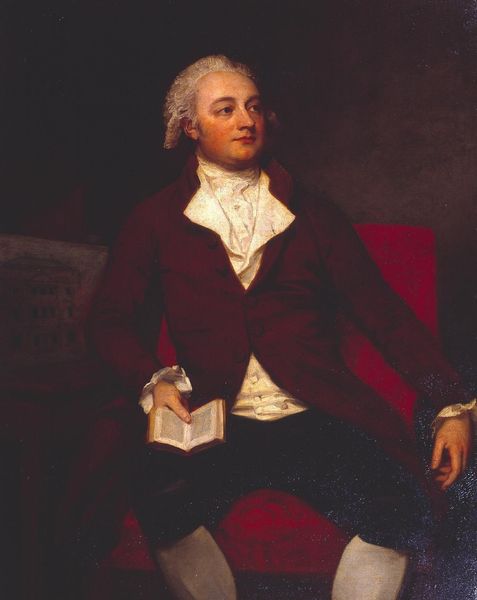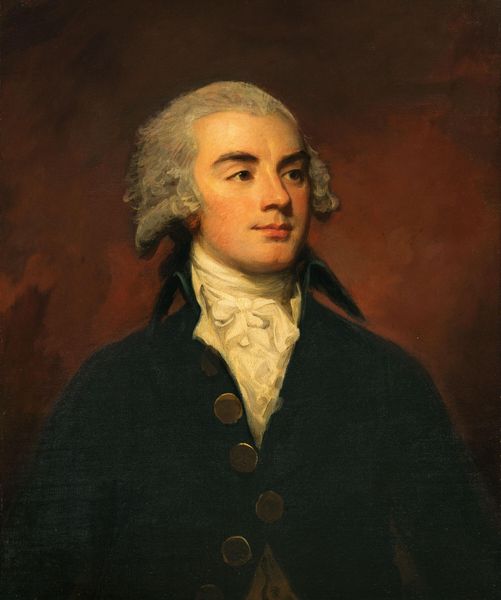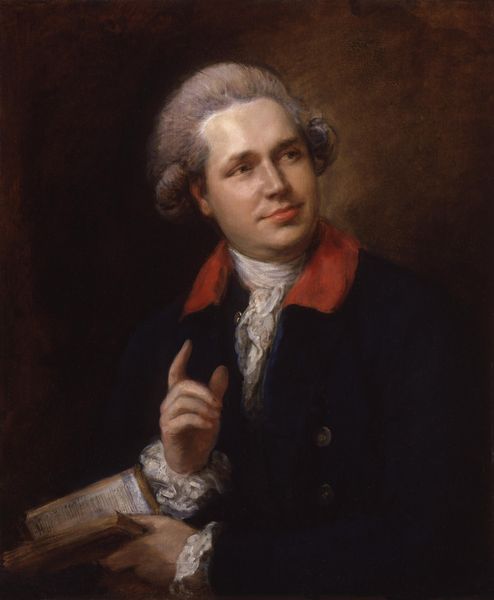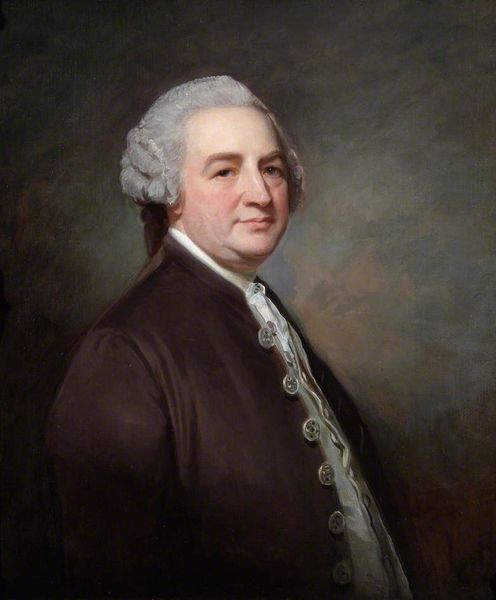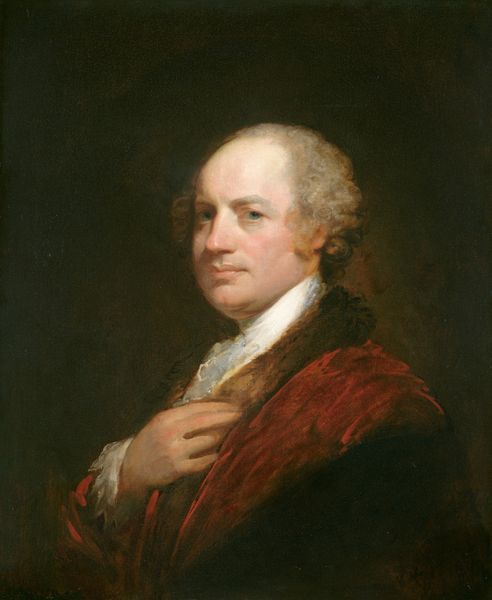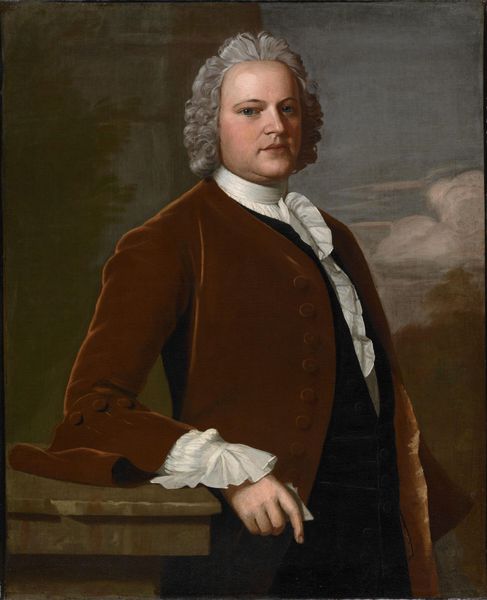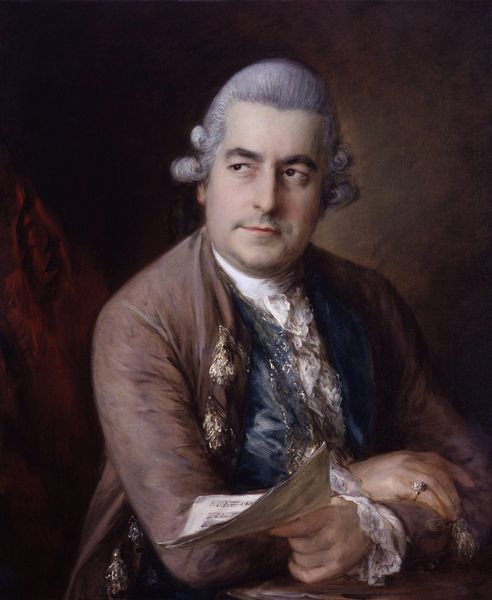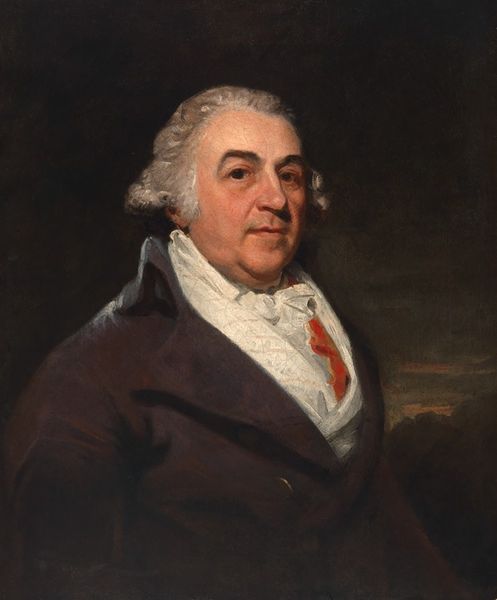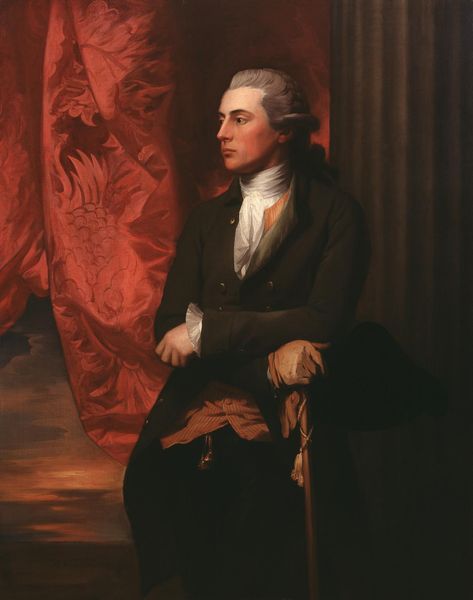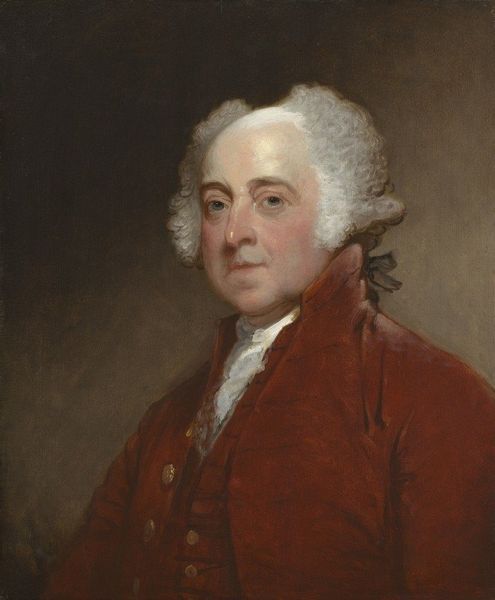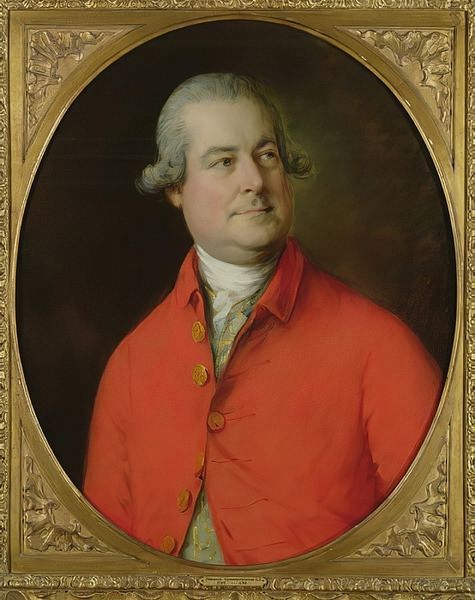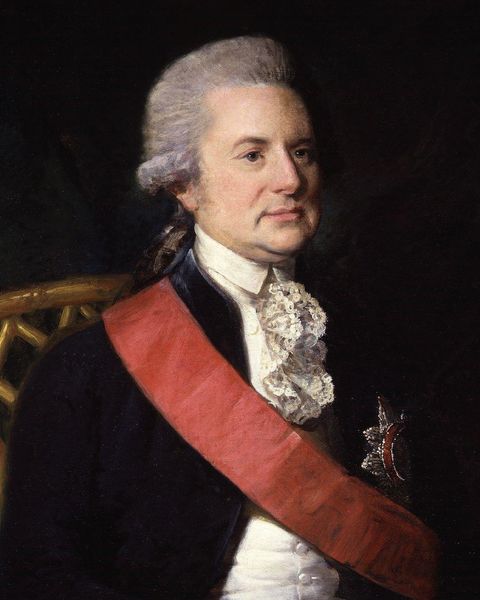
Dimensions: overall: 76.3 x 63.2 cm (30 1/16 x 24 7/8 in.) framed: 99.7 x 87 x 2.9 cm (39 1/4 x 34 1/4 x 1 1/8 in.)
Copyright: National Gallery of Art: CC0 1.0
Curator: Looking at this canvas, I see restraint, a study in calm authority. Editor: Interesting. I see it as slightly aloof, a touch of the languid. What can you tell us about the subject? Curator: This is a portrait of William Henry Cavendish Bentinck, the 3rd Duke of Portland. Painted around 1774 by Matthew Pratt. A fine example of the Rococo style, wouldn't you agree? Editor: Indeed. Note the soft colors, the emphasis on elegance. Rococo served as a form of visual rhetoric for the aristocracy, presenting a carefully cultivated image of power and grace. Curator: I’m intrigued by the limited color palette, which lends a certain serenity to the image. The muted tones contrast with the implied textures, from the velvet drape behind him to the lace at his wrists and neck. A play of tactile versus visual, perhaps? Editor: Absolutely. Those textures speak volumes about status and the careful construction of identity in that era. The placement of the hand is interesting, isn't it? That relaxed gesture was very en vogue. The implication is casual, confident... Curator: It projects control, yes, even if the posture reads slightly… theatrical, for lack of a better word. Is it meant to imply that the sitter is world-weary or merely secure in his privilege? Editor: Both, possibly. The portrait acts as a form of propaganda, showcasing his lineage and suggesting inherent fitness for leadership, whatever his mood might be on a given Tuesday. Curator: Well, this portrait encapsulates the way art serves to idealize figures in public life. By carefully considering color and texture, this painting successfully transforms a man into an almost mythological figure of power. Editor: And remember that even perceived casualness in art always functions as carefully deployed, political propaganda. In the Duke's apparent ease, Pratt offers us a window into the complexities of image creation and social perception in eighteenth century Britain.
Comments
No comments
Be the first to comment and join the conversation on the ultimate creative platform.
